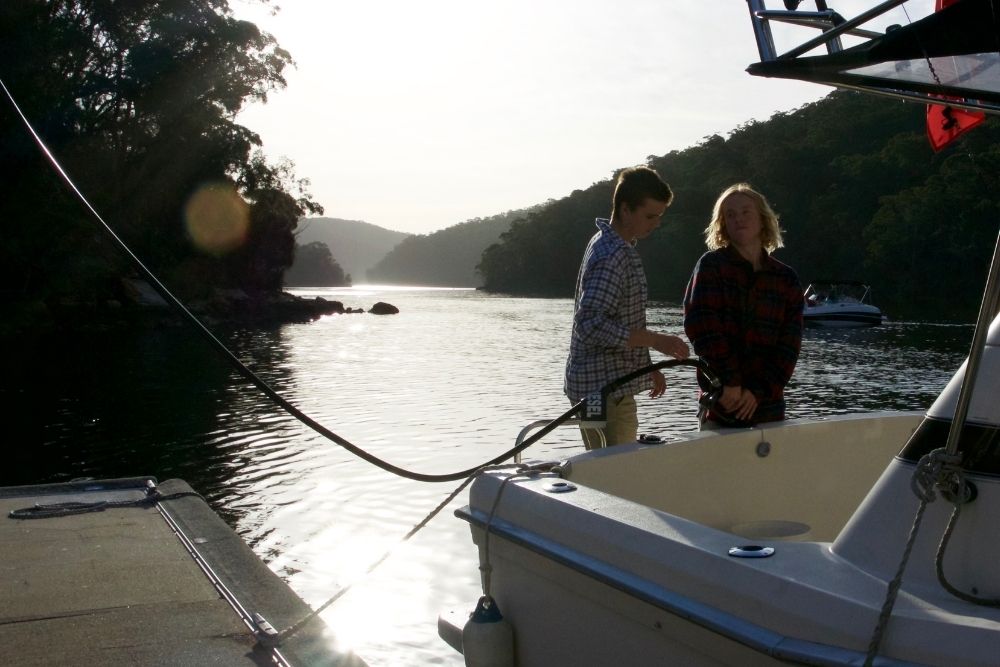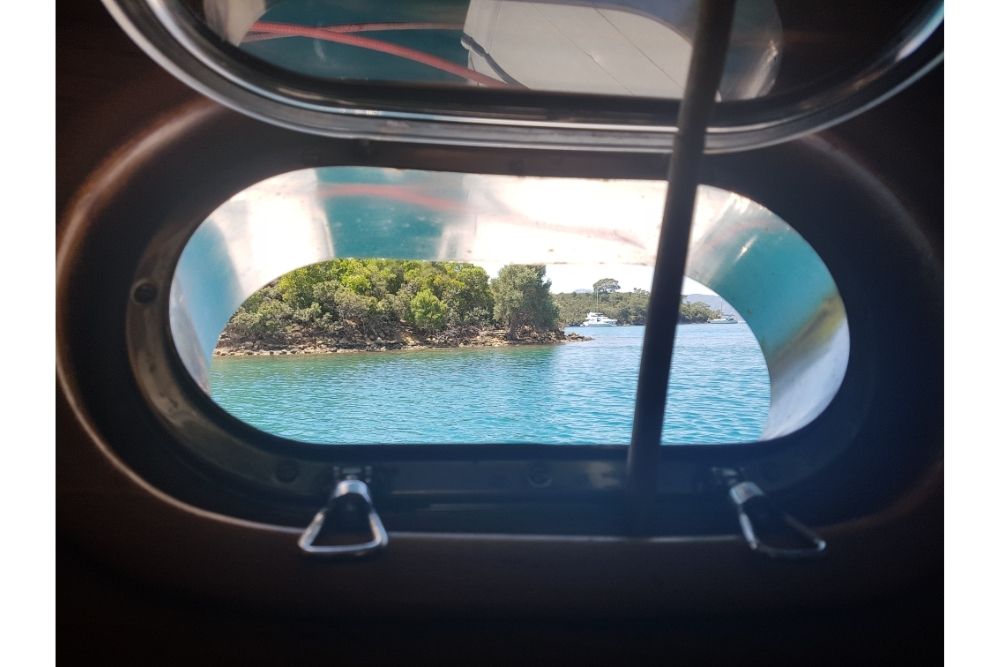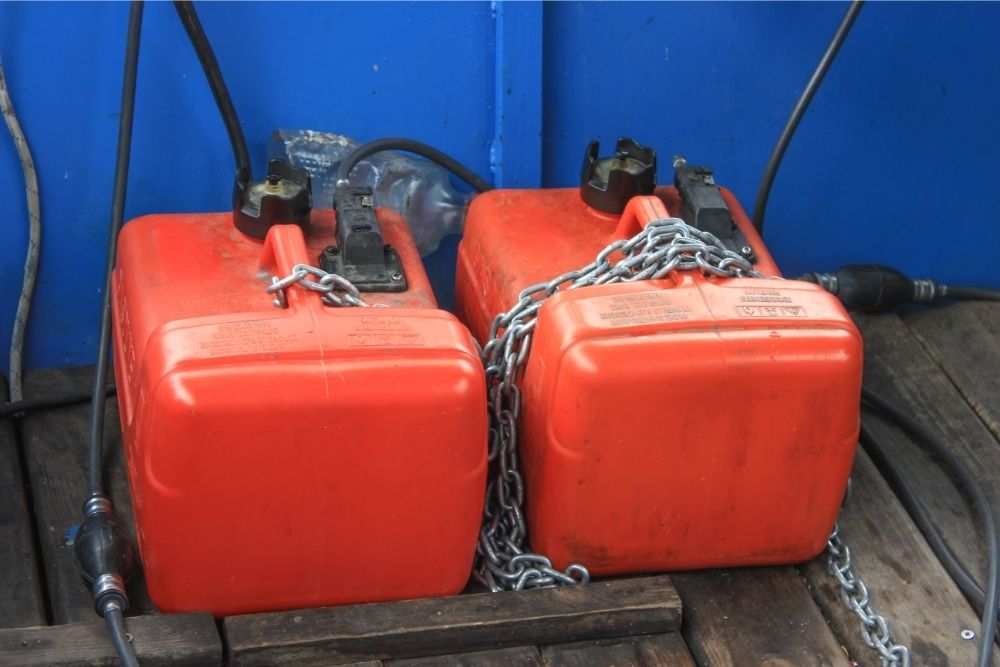Fueling is a job you sign up for when you own any vehicle, and filling your boat up with gas at a fuel dock is no exception.
However, if you’re new to owning a boat, and you’re wondering what safety precautions you need to take before fueling, you’re in the right place.

In this article, I will cover some key information about fueling your boat and the safety precautions you should always take to fuel your boat responsibly.
So, let’s get started.
Why Do Boats Explode After Refueling?
Gasoline and gasoline fumes are one of the most common causes of boat fires and explosions.
This primarily comes down to gas fumes becoming trapped within a confined space, such as the bilge or another compartment.
Before beginning to fuel your boat, there are a variety of essential safety precautions that you need to make sure that you carry out when you’re fueling to avoid fuel spills and to make sure you’re being safe.
Safety Precautions To Take When Fueling Your Boat
Tie The Boat To The Dock Securely
Once you have pulled into the dock, you will need to tie the boat to the dock securely.
Before you tie up the boat, you will first need to make sure that your passengers get off the boat and clear the area. This is not only essential for their safety, but also means that the weight distribution in the boat isn’t off.
This is important as the process of filling up will be smoother and the risk of spillages will be minimized if the boat is level.
Always Turn Off The Engine
Before you fill up your boat with fuel, you will need to make sure that you turn off anything that might cause a spark.
This includes the engine, fans, or any electrical equipment such as propane refrigerators.
Never Allow Anyone To Smoke Or Strike A Match At The Fuel Dock
Smoking is a fire hazard at the best times, but at a fuel dock, get the idea out of your head as even being a possibility.
Lighting a cigarette at a fuel dock (and gas station) is one of the most unnecessary risks you can take. To avoid a fire hazard, make sure that you never allow anyone in your group or others at the fuel dock to smoke or strike a match.
This should be a golden rule to remember, always. There are no exceptions.
Get Yourself Into A Comfortable Position For Fueling Your Boat
Before you fill up your fuel tank, you will need to make sure that you’re in a position where you can see the deck fill and are able to hold the nozzle comfortably.
If you’re stretching or are uncomfortable in any way you increase the chances that you will need to shift your position. Therefore, you are much more likely to cause a spillage as a result of this.
Keep The Nozzle In Contact With The Edge
To prevent build up of static electricity to minimize the risk of sparking, you will also need to keep the nozzle in contact with the edge of the fill the entire time that you are filling your fuel tank.
Never Fuel At Night Unless It’s An Emergency
It’s never a good idea to fuel at night unless it’s absolutely necessary because of an emergency.
This comes down to the fact that you will struggle to see if and where you’ve spilled gasoline, which will increase the chances of there being a fire hazard. In addition, night fueling will require additional lighting, which ideally should not be used anywhere near gasoline.
In the case of an emergency, you will need to be extremely careful when fueling your boat by using electric lights, as these are the least risky. However, it’s never recommended that you do this if you can avoid doing so, as electric lights still aren’t safe.
You will need to make sure that you take the time to clean down properly and ensure that you increase the air circulation before you set off again. Always make sure that you use oil absorbent pads to thoroughly clean any gas spillages that have occurred in the process of filling up.
To ensure that you’re being as safe as you can, you should ideally only fill up during daylight hours when you can see exactly what you’re doing to prevent any accidents from happening.
Close All The Windows, Ports, And Doors Of Your Boat

When you’re fueling your boat, you will need to make sure that you close all of the windows, ports, doors, and any other openings to prevent fumes from entering the boat.
As I’ve mentioned above, gas fumes are one of the most common causes for boat fires, so this is a crucial step to take.
Once you have finished fueling, before starting the engine again, you will need to take a good sniff to see if any fumes have escaped. If you can smell fumes, then you will need to wait until the fumes have fully dissipated or increase the air circulation before turning on the engine again.
Never Overfill Your Tank
An important safety precaution to take is to never overfill your fuel tank. It’s important that you know how much fuel your tank is capable of holding and only fill it to 90%. This is crucial, as the fuel will expand as it gets hotter.
Bearing this in mind, filling your tank to 90% will allow room for the gas to expand and avoids the potential for overflow.
To figure out when your tank is nearly full of gas, you will need to listen as you fill up the tank carefully.
As the tank becomes close to being full, the sound will change as the fuel starts to come up the fill pipe. Make sure that you can recognize this sound next time so that you know when to stop filling your fuel tank.
Clean Up Any Fuel Spills Immediately
It cannot be stressed just how flammable gasoline is. When filling your fuel tank, you will need to make sure that you clean up any fuel spills straight away with an oil absorbent pad.
It is crucial that you always clean up after yourself, being mindful to clean the bilge or any other parts that you may have spilled gas on.
If you’re unsure after taking a sniff around the area, it’s better to be safe than sorry by having a little clean around regardless of whether you think gas has been spilled.
Portable Fuel Tanks, Factors To Consider

There are a variety of factors that you should consider when it comes to filling up your portable containers with fuel. You will need to make sure that you:
Check The Rules And Regulations Of Your Marina Or Dock
It’s important to be aware that different marinas have different rules and regulations that you need to abide by in order to keep using them and to avoid a fine.
While some marinas have a no ‘gas can’ policy whereby nothing is allowed to be brought to the docks, others allow diesel containers.
It’s important to check the rules and regulations beforehand to ensure that you’re being as safe as possible and aren’t going to be fined.
Unload Any Portable Containers
If your dock does allow portable containers, when you first get off the boat at a fuel dock, you will want to make sure that you unload any portable fuel tanks and have your passengers step off the boat and onto the dock.
Ensuring that you remove them from your boat to fill is essential, as this will help to stabilize the boat while also minimizing the likelihood of gasoline spills from occurring. You’d be surprised how easily it is for spillages to occur that would otherwise be avoidable.
Store Your Portable Fuel Tanks Correctly
You will need to make sure that you always store your portable fuel tanks away from direct sunlight.
The safest place for them is to store them in a cool, dry place to lower the risk of condensation forming.
Watch For Spillages
It’s no secret that portable fuel tanks are prone to spillages and it can take a longer period of time to fuel your boat with one.
To avoid any accidents or spillages from occurring, you will need to make sure that you are fueling your boat with patience, and are pouring slowly and deliberately to minimize the risk of spills.
Always make sure that you clean up after yourself properly and wipe any necessary areas before you turn the engine back on.
Notes On Ethanol
You should always check whether your gas station offers gasoline with ethanol. This comes down to the fact that other safety precautions need to be taken when using ethanol that has been combined with gasoline.
For instance, adding ethanol treatment prior to filing up your fuel tank will help to prevent your engine from becoming damaged.
In Summary
So, hopefully after reading this article you now know about the safety precautions you need to take every time you’re fueling your boat to prevent any accidents.
Make sure that you are always being as safe as possible. Remember that practice makes perfect. The more experience you gain with filling your boat with fuel, the more confident you will feel in the process.
Good luck fueling your boat!
